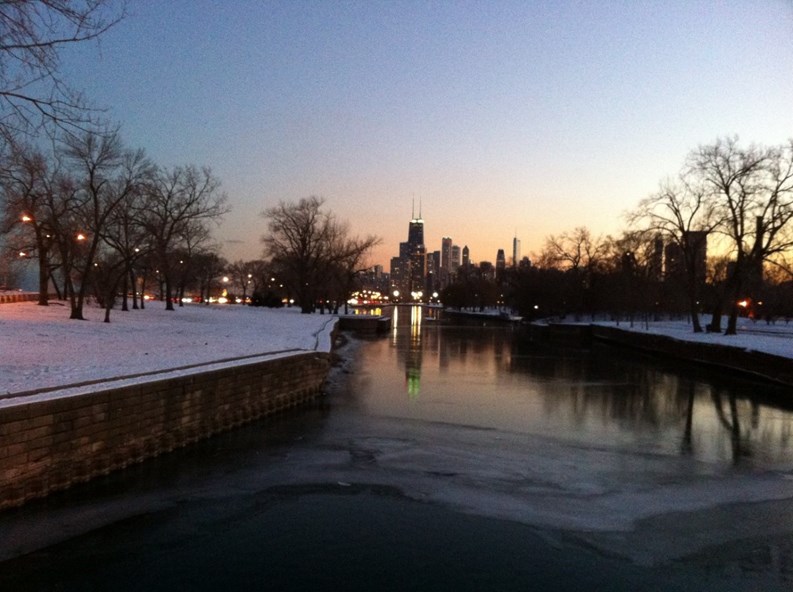Two miles north of downtown Chicago you find one of the Windy City’s quintessential neighborhoods, Lincoln Park. Lincoln Park is located along the lakefront and comprises the area north of North Avenue, south of Diversey Parkway, west of the Lake Michigan and east of the Kennedy Expressway.
With an exceptional shopping, rich mix of restaurants, world-class theaters and entertainment, renowned cultural institutions and, of course, lakefront park and activities, Lincoln Park offers Chicagoans and visitors an authentic Midwestern big-city experience.
Named after Lincoln Park, a vast stretch of park belonging to the Chicago Park District, the community area is anchored by the Lincoln Park Zoo and DePaul University. The community area of Lakeview is north of Lincoln Park, North Center is to the northwest, Logan Square to the west, West Town to the southwest, and Near North to the south.
Beginnings as a Remote Outpost
The area now known as Lincoln Park in Chicago was primarily forest with stretches of grassland and occasional quicksand until the late 1820s when the Europeans arrived.
In 1824, the United States Army built a small post near today's Clybourn Avenue and Armitage Avenue (formerly Centre Street). Indian settlements existed along Green Bay Trail, now called Clark Street (named after George Rogers Clark, a brigadier general in the Revolutionary War), at the current intersection of Halsted Street and Fullerton Avenue. Before Green Bay Trail became Clark Street, it stretched as far as Green Bay, Wisconsin, and was part of what still is Green Bay Avenue in Milwaukee County, Wisconsin.
In 1836, land from North to Fullerton and from the lake to Halsted was relatively inexpensive, costing approximately $150 per acre (according to 1836 prices not adjusted for inflation). Because the area was considered remote, a small pox hospital and the city cemetery were located in Lincoln Park until the 1860s. Chicago became incorporated as a city in 1837, and North Avenue (to the south of today's Lincoln Park neighborhood) was established as its northern boundary. Settlements along the Green Bay Trail grew in number when the Green Bay Road was widened and the government offered land claims to interested speculators and investors. The area north of Chicago, including today's Lincoln Park, was eventually incorporated as Lake View Township, which was subsequently annexed to the city of Chicago in 1889.
In the period following the Civil War, the area around St. Josaphat's parish around Southport and Clybourn was home to Chicago's Kashubian community, who although Polish in national orientation, possess their own distinct culture and language marked by the distinct influences of their maritime way of life as well as their German neighbors.
Famous Residents
Wizard of Oz author L. Frank Baum called Lincoln Park home as did Buckminster Fuller (noted engineer, author, designer, inventor and futurist) and reclusive controversial writer and outsider artist, Henry Darger, who worked as a janitor at Children's Memorial Hospital.
In the 1950s, 1960s and 1970s, Lincoln Park was also home to the first Puerto Rican immigrants to Chicago. Jose (Cha-Cha) Jimenez transformed the local Young Lords gang into human rights activists for Latinos and the poor. They mounted sit-ins and takeovers of institutions and churches at Grant Hospital, Armitage Ave. Methodist Church, and McCormick Theological Seminary. The violent confrontation between police and demonstrators during the 1968 Democratic National Convention took place in Lincoln Park and on the streets of Chicago.
Today, a very small number of Puerto Ricans reside in Lincoln Park. The neighborhood population is primarily made up of young urban professionals, recent college graduates, and young families.
A Nice Place to Live
Encompassing many neighborhoods, the area also includes most of the Clybourn Corridor retail district, which continues into the Near North Side. Lincoln Park is home to Lincoln Park High School, Francis W. Parker School, and DePaul University. Many students who attend these schools now live in this neighborhood. Lincoln Park is also home to four architecturally significant churches: St. Vincent de Paul Parish, St. Clement Church, St. Josaphat's (one of the many so-called 'Polish Cathedrals' in Chicago), and St. Michael's Church in the Old Town Triangle area of Lincoln Park. Visible from throughout the neighborhood, these monumental edifices tower over the neighborhood, lending the area much of its charm. The neighborhood also houses Children's Memorial Hospital and the currently closed Lincoln Park Hospital, which is slated for redevelopment to condominiums, medical offices, retail and commercial to be renamed Webster Square.
Affluence Epitomized
While the average single family house is priced around $1 million dollars, many homes in Lincoln Park sell for more than $10 million, making it one of the wealthiest and most expensive communities in the city. In 2007, Forbes magazine named the area between Armitage Avenue, Willow Street, Burling Street, and Orchard Street as the most expensive block in Chicago.
The median list price for homes in the Lincoln Park/DePaul neighborhood is $381,000 and most condos were selling as recently as December 2010 for an average of around $401,000, according to real estate site, Redfin.com. According to Trulia.com, the average listing price in the area was $792,984 but that includes all types of property and is not limited to multifamily co-ops and condos. For example, Sotheby’s has listed a one-bedroom, 700-square-foot condominium apartment on North LaSalle Drive for $229,999. While some home prices have dipped due to the economy, there are still bargains to be had in the Lincoln Park neighborhood for savvy buyers.
The neighborhood is very welcoming and contains large number of upscale national retailers, boutiques, bookstores, restaurants and coffee shops. An Apple Store opened in October 2010, as well as a Lacoste store on North Michigan Avenue. There are also many bars and clubs in the area, especially along Lincoln Avenue between Wrightwood and Webster.
In addition to the zoo and the park, other attractions are the Lincoln Park Conservatory, the Chicago History Museum, the Peggy Notebaert Nature Museum and the North Avenue Beach. From May through October, the Lincoln Park Farmers Market and Chicago’s Green City Market offer the freshest seasonal produce around. The Lincoln Park neighborhood is accessible via mass transit, including the CTA's Red, Brown and Purple lines at the Fullerton station, the Purple and Brown lines at the Armitage and Diversey stations, as well as CTA bus service.
Lincoln Park residents are served by Chicago Public Schools, which includes a number of neighborhood and city-wide options for students. Nationally, Lincoln Park High School is ranked as the 90th best high school in the country by the U.S. News and World Report.
You can’t go wrong for considering living in Lincoln Park based on its fine reputation as a premier cultural, retail, dining and social entertainment destination.







Leave a Comment